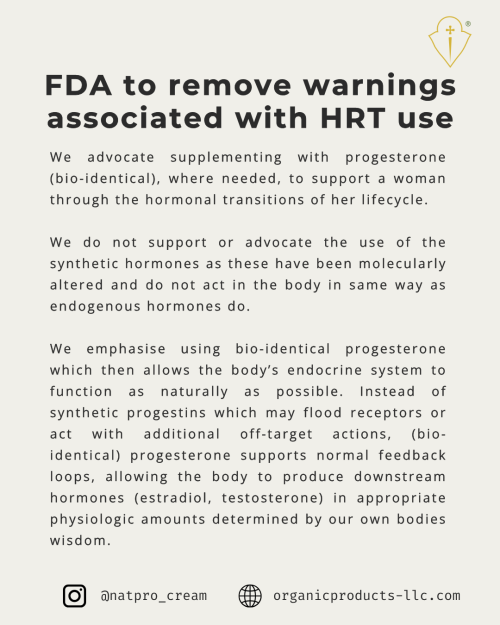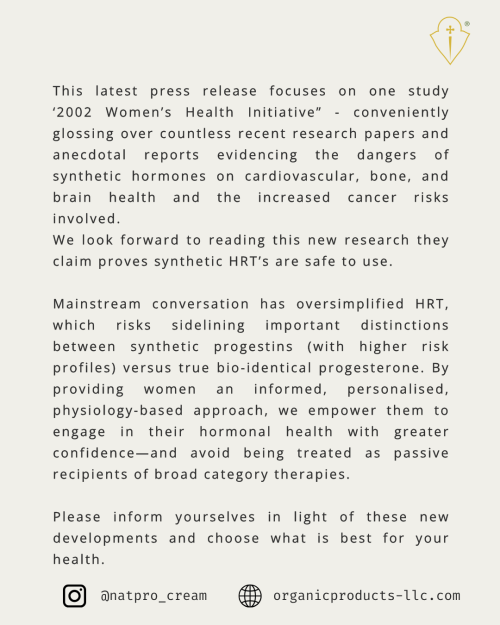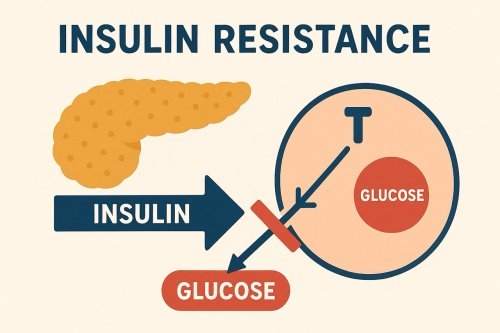Progesterone test
There is a right and a wrong approach to having a progesterone test. The following article provides a comprehensive insight into the subject of hormone testing (see here for typical progesterone saliva test result sheets) in general. It is published here by kind permission of the author, Dr David Zava, and the Townsend Letter.
Saliva hormone testing
Townsend Letter for Doctors and Patients, Jan, 2004 by David Zava
Introduction
As I frequently write on the topic of laboratory testing and analysis of steroid hormones in saliva, I have chosen to collect and augment my writings for purposes of this article, to encompass the advantages and disadvantages of the methodology as it compares with serum. I will also discuss one of the most perplexing issues surrounding salivary hormone testing: why transdermal delivery of hormones through the skin results in a remarkable and measurable increase in salivary hormone levels, but little change in blood serum levels. Finally, I will talk about the "ideal" hormone laboratory report and its clinical value in helping doctors and patients evaluate and individualize appropriate therapies to restore hormone balance.
Saliva basics
What is saliva and how do hormones enter saliva?
Saliva originates from the salivary glands located under the tongue and along the sides of the mouth. Saliva is composed of a complex mixture of mucins, enzymes, antibodies, electrolytes, and hormones, all of which serve to begin the process of digestion and protect the oral mucosa. (1)
The formation of saliva in the salivary ducts begins with electrolytes (particularly sodium) being actively pumped into the ducts by an energy dependent process. Water then diffuses by osmosis into the duct to reestablish a physiological osmolality. Blood components enter the watery fluid of the salivary duct by one of three processes: active transport, ultrafiltration or passive diffusion. Antibodies such as IgA and IgG are actively secreted into saliva by an energy dependent process. Small charged molecules like glucose enter saliva by ultrafiltration, the rate of entry of which is inversely related to molecular size. Steroids and other small neutral molecules not bound by blood proteins freely pass through the membranes of the salivary gland into saliva by passive diffusion.
Passage of neutral steroids from blood into the salivary ducts is about 10 times faster than the flow rate of saliva. (1), (2) Because of the rapid passive diffusion of steroids into the saliva ducts, saliva hormone levels are not altered significantly when the flow of saliva is increased with stimulants such as chewing gum. However, when a steroid is rendered more polar by metabolic conjugation (eg, sulfation, glycosylation) its rate of flow into saliva is significantly slower resulting in lower concentrations of the conjugated steroid as the saliva flow rate increases with use of stimulants.
Only a small fraction of steroids in blood are bioavailable.
In blood, 95-99% of the steroids are bound up by binding proteins such as sex hormone binding globulin (SHBG), cortisol binding globulin (CBG), and albumin. (3-5) The small fraction of steroids not bound is considered the free fraction, or that which is bioavailable as blood percolates through the capillary beds of tissues. The free or bioavailable fraction of steroids in blood enters the salivary gland and the salivary duct by passive diffusion just as they enter other tissues of the body. Hence, saliva provides a convenient diagnostic fluid from which to monitor, noninvasively, the bioavailable fraction of steroid hormones circulating in the bloodstream and entering tissues. "Rule-of-thumb"--saliva hormones represent 1-5% of serum.
When steroid hormones are produced endogenously or are taken orally the salivary level of any particular steroid generally ranges from about 1-5% of the levels found in serum. Shown below in Figure 1 are examples of serum and expected saliva levels of the same steroid, assuming 2% of the blood steroid is bioavailable. The exception to this "rule-of-thumb" is when steroid hormones are delivered topically through the skin, where salivary hormones often exceed levels measured in serum. I will discuss this anomaly in a later section.
Saliva Laboratory Testing: The Advantages and Disadvantages
There are numerous advantages to using saliva to test for steroid hormones compared to blood serum or plasma. But there are also disadvantages. These are discussed below and outlined in Figure 2.
Advantages
The ease and simplicity of collecting saliva any place or time of day under stress-free conditions in a private setting certainly has advantages over collecting blood at restricted times in a doctors office or clinic under stressful conditions. Steroid hormones are exceptionally stable in saliva, allowing for convenient collection and shipment at room temperature by inexpensive couriers. Serum, on the other hand, requires qualified personnel (phlebotomist), special procedures (needles and serum collection tubes) and equipment (centrifuge and lab space to house it) as well as specialized shipping vessels (ice pack) and express delivery (overnight). Moreover, hormone concentrations can vary depending on the time of day and month making it especially difficult to schedule optimal collection times with serum. Overall, the conveniences in testing salivary hormones translate into lower overall costs both for the patient, health care provider, and insurance carrier.
Disadvantages
More technically challenging than serum testing of steroids. Although salivary testing has many advantages over serum testing, there are still some disadvantages to saliva testing that should be acknowledged. Technically, saliva testing is more challenging than blood testing, limiting the number of laboratories that are capable of performing the tests. (6) Blood levels of steroid hormones are, on average, about 10 to 100 times higher than saliva levels and commercial test kits and ranges are based on these higher serum hormone levels. (7), (8) For example, most commercial test kits for estradiol provide standards and a sensitivity range within the expected serum levels of about 10 to 200 pg/mi. Salivary estradiol levels range from about 0.5 to 5 pg/mi, much lower than the standards and assay sensitivity provided by commercial kits. Therefore, laboratories performing saliva testing must have the technical expertise to either create their own tests or modify commercial test kits. Significant technical hurdles beyond the technical expertise of most commercial testing laboratory personnel must be overcome to make this transition.
Interfering Components
Foods, beverages such as coffee, and drugs taken just before collecting saliva can interfere with test results or cause a transient shift in hormone levels. (9) Mucins in saliva can interfere with the test, causing spuriously high levels. Some chewing gums and cottons used for saliva collection contain substances that interfere with some saliva tests, (10) resulting in erroneously high hormone levels. Sugar in regular chewing gum can interfere with some saliva tests. Chewing gum or other physical agents (eg, parafilm) used to increase the flow of saliva can also cause more bleeding of the gums, especially if the individual has advanced periodontal disease. Since 95-99% of hormones are blood-bound, small amounts of blood in saliva could cause significant changes in hormones that are not truly representative of the bioavailable fraction of the hormone.
Contamination of the saliva collection tube with topical hormones. The saliva can be contaminated inadvertently during collection with hormones present on the hands or lips from use of topical hormones. This results in an inordinately "false-high" hormone level. Care must be taken to avoid the use of topical hormones on the face and neck the day before collection. If topical hormones are used, hands should be washed thoroughly to avoid potential contamination of the tube.
False-elevated results with use of sublingual hormones. Use of sublingual hormone troches can cause spuriously high hormone test results if the hormone has not been given ample time to clear from the oral cavity. Individuals who use hormones sublingually at night and collect saliva in the morning will almost certainly get false-high saliva test results. We recommend at least 36 hours between use of hormone troches and saliva collection.
No proficiency testing. Saliva and serum testing laboratories are governed by the CLIA (Clinical Laboratory Improvement Act) regulatory agency. However, both saliva and serum testing laboratories use serum, not saliva, for proficiency testing. Saliva testing laboratories are, therefore, not being tested for their competence to reproducibly and accurately measure hormones in saliva, which is a much greater challenge than measuring the hormones in serum.
Perceived disadvantage
Another "perceived" disadvantage to saliva testing is that when a hormone is administered topically via creams or gels, salivary hormone levels often are very high, even higher than serum levels. Out of frustration, many health care providers are left to conclude that this anomaly in high salivary hormone levels is the result of an unexplained artifact of saliva testing unique to topical hormone delivery. For lack of explanation in the medical literature concern has arisen over the validity of saliva hormone testing when hormones are delivered topically. This odd phenomenon, and the failure of some saliva testing laboratories to reset the expected ranges, has driven many health care providers away from saliva testing. As I will discuss below, when steroids are delivered topically, serum testing grossly underestimates bioavailable hormone levels and is not reflective of either tissue uptake or response. Saliva hormone levels, on the other hand, closely parallel tissue uptake of the hormone.
The Paradox: Salivary Hormone Levels Often are Higher than Serum Levels when Hormones are Delivered Topically
One of the most perplexing issues surrounding saliva testing is the odd phenomenon that topically delivered steroids cause a dramatic increase in salivary hormones without a concomitant increase in serum levels. (11), (12) For example, 30 mg topical progesterone supplementation results in an average rise in salivary levels from about 50 pg/ml (0.05 ng/ml) to 500 to 3000 pg/ml (0.5 to 3 ng/ml), a 10 to 60-fold increase. This increase is proportionally even greater when progesterone is supplemented at 100 to 200 mg, a common topical dose used by many doctors, resulting in salivary progesterone levels rising to as high as 10,000 to 100,000 pg/ml (10-100 ng/ml). Under the same conditions, serum progesterone levels only increase about 4-fold, from about 0.5 to 2-3 ng/ml. (12), (13) The same disproportionate increase in salivary hormone levels is seen with topical delivery of all the other steroid hormones (eg. estradiol. testosterone. DHEA. etc.). (11)
The remarkable increase in salivary hormone levels observed with topical hormone delivery raises a number of questions. First, if salivary hormones are derived from blood, how could saliva hormone levels be higher than serum or plasma levels? The numbers just don't add up. Second, if this is some unexplained artifact, how does the hormone get into saliva and by what mechanism?
Questioning Assumptions
To answer these questions it is worthwhile to take a step back and question the assumptions made when testing hormones in saliva and serum. It is assumed that hormones measured in serum or plasma represent all the hormones in whole blood. Serum (or plasma) comprises only about half of the blood volume, the remainder is made up of blood cells, mostly erythrocytes, which are removed by sedimentation. It is assumed that the blood cells are inert and play no role in hormone transport in the bloodstream. This, in fact, is not so.
Blood cells as hormone transporters
Blood cells, particularly erythrocytes, play an important role in steroid hormone transport. In fact, early studies with red blood cells demonstrated that when progesterone was added directly to whole blood, about 80% associated with erythrocytes and was removed from serum by sedimentation. (14) In contrast, only about 5% of aldosterone associated with the erythrocytes under the same conditions. Progesterone is a non-polar steroid that seeks out a non-polar, lipophilic environment such as the plasma membrane of the red blood cells. In contrast, aldosterone is a more oxidized and polar version of progesterone and would more likely find its way to a hydrophilic portion of blood, such as plasma.
Koeford and Braun (15) studied the permeability of red blood cells to steroids and concluded that steroids bind avidly to red blood cells and serve as a transport mechanism for them. They determined that when steroid-laden red blood cells enter capillaries of tissues much of the steroid payload is delivered to adjacent tissues within milliseconds. From this, it is not difficult to envision a nonpolar steroid entering the bloodstream directly through the skin, hitching a ride on red blood cells, and being delivered almost instantaneously to tissues throughout the body. One of these tissues would be the salivary gland, duct, and saliva.
Studies show topical delivery of hormones results in increased tissue hormone levels without parallel increase in serum levels.
Several studies support the evidence that topical progesterone supplementation significantly increases tissue levels of progesterone without a parallel increase in serum levels. Three of these studies are discussed briefly below. These studies are important because they emphasize that serum hormone testing does not reflect tissue response when hormones are delivered topically.
The first study by Chang and de Lignieres (16) demonstrated that topical application of estradiol, progesterone, or combinations of these hormones to the breasts of women resulted in a dramatic increase in breast tissue levels of these hormones without a concomitant increase in serum levels. In this study, women applied either a gel containing no hormones, or gels containing 25 mg progesterone, 1.5 mg estradiol, or a combination of estradiol and progesterone. After 10-13 days tissue biopsies of the breast were obtained and analyzed for hormone content and cell growth patterns. The tissue content of progesterone and estradiol increased about 100- and 200-fold, clearly demonstrating that tissue uptake of these hormones occurred. Pathologists then assessed the replication rate of breast ductal cells and found that estradiol increased and progesterone decreased the rate of breast cell replication. This demonstrated that steroids delivered topically to the breasts not only were taken up by breast tissue but had a clear biological impact on the growth rate of breast ductal cells.
Oddly, these remarkable changes in the tissue content of progesterone and estradiol and cell growth rate were not paralleled by a statistically significant increase in serum estradiol or progesterone. Although salivary progesterone was not monitored in this study, we know from thousands of saliva tests in my laboratory, (11) and from similar clinical studies, (12) that the 25 mg of topical progesterone gel used in this study results in a dramatic rise in salivary progesterone levels, as much as 50 fold.
A second study by Rachel Miles, MD, and associates (17) demonstrated that serum testing of progesterone is not reflective of tissue uptake when progesterone is used as a vagina suppository. In this study, progesterone levels in serum and tissue were compared after intramuscular and vaginal delivery of progesterone. After treatment with either intramuscular injection of progesterone or vaginal progesterone suppositories, serum and uterine biopsies were taken to measure blood and tissue uptake of progesterone. Serum levels of progesterone (measured by RIA) were three times higher with intramuscular delivery of progesterone than with vaginal delivery. In striking contrast, tissue uptake in the uterine biopsies was 10 times higher with vaginal delivery of progesterone than with intramuscular injections. For lack of a better understanding, these authors attributed the tissue differences to a "first pass effect," a term used to describe local diffusion of progesterone from the vagina to the uterus without significant systemic delivery to other tissues. (18) However, these authors could not prove or disprove what they described as a "first pass effect" because they did not biopsy other tissues.
Vaginal delivery of progesterone into the body is, in essence, through the epithelial layer of skin and does not differ in this regard from other forms of topical progesterone delivery. Therefore, a more likely explanation for the discrepant serum/tissue results is that when progesterone is delivered vaginally it is rapidly delivered to all tissues throughout the body. The manufacturers of Crinone, a vaginal suppository progesterone gel, make the same claims of a "first pass effect," yet also claim that women have significant improvement in well being, indicating that progesterone also finds its way from the vagina to the brain as well as the uterus. (19)
A third study performed by a group of Italian investigators showed that progesterone delivered to the nasal cavity caused remarkable changes in uterine morphology but only marginally affected serum progesterone levels. (20) Following a period of estrogen priming, progesterone was administered as a nasal spray at about 8 mg/spray 4 times per day (total dose of about 30 mg). After using progesterone nasally for a week, uterine biopsies were obtained and analyzed for changes in morphological features. Nasal progesterone induced changes that were consistent with a secretory endometrium, meaning that progesterone found its way from the nasal cavity to the uterine lining. These clinicians would be hard pressed to explain their results by a "first pass effect."
These three studies clearly reveal that when progesterone is delivered topically through the skin, serum testing of steroid hormones does not reflect tissue uptake. Although saliva was, unfortunately, not measured in any of these studies, our unpublished results of thousands of saliva tests reveal that this same concentration (about 15-30 mg) of progesterone (or any other steroid hormone) results in a dramatic increase in salivary progesterone. Therefore, when steroid hormones are delivered topically, saliva provides a more realistic and accurate reflection of tissue hormone uptake and biological response.
It is unfortunate that many physicians refuse to allow their patients to use topical hormones based on the failure of serum to demonstrate significant increases in hormone levels. I am confronted daily with letters and phone calls from women who have benefited enormously from use of about 15-30 mg of OTC topical progesterone but whose physicians refuse to write prescriptions for it based on their experience with serum testing. Perhaps it is time to question the assumptions we have made about serum testing of steroid hormones, especially when they are delivered through the skin.
The Ideal Saliva Hormone Test Report
Ideally, a hormone test report will contain information that serves as a guide to help an individual and his or her health care provider better understand how hormonal imbalances could be affecting health and well being (Figure 3). The hormone test report should also help health care providers and their patients come to an educated decision about the most effective treatment strategy (hormonal, nutrition, exercise, stress reduction, etc.).
Gender, age, menopausal status, menstrual cycle information, and whether or not a woman has had her ovaries removed all affect hormone levels and should be included on a test report. The use of hormones (types, delivery systems such as oral vs. topical, dosage) and when they were last used all impact test results and ranges and should be included in the test report.
Progesterone levels differ during the phases of the menstrual cycle (follicular vs. luteal) and with different delivery systems when taken as replacement therapy (oral vs. topical). Test results should reflect these differences; otherwise the results can lead to confusion. For example, a postmenopausal woman supplementing with topical progesterone will have much higher salivary progesterone levels than a postmenopausal woman not supplementing. Therefore, if no information is provided about route of administration (oral, sublingual, topical, vaginal), or the ranges are not shifted to a supplemented level, test results can lead to confusion and the impression that the patient has some hormonal imbalance when, in fact, she may be enjoying enormous benefit from the hormonal therapy.
The importance of matching symptoms with hormone profiles
The majority of individuals who test their hormones in saliva or blood have a reason; they are suffering from symptoms that impact the quality of their life. They recognize that these symptoms often are based on hormonal imbalances. For example, a woman suffering from PMS and fibrocystic breasts, which have been getting progressively worse as she approaches menopause, understands that this is due to hormonal changes. She often wants to verify this hormonal imbalance by hormone testing to justify some form of intervention. Or a man who suffers from low energy, muscle loss, apathy, sagging sex drive, and has lost that "get up and go" as he approaches his 50's recognizes something is wrong and seeks hormone testing to determine if his problems are related to dwindling testosterone.
There is little question that an individual's symptoms are the primary driving force that compels them to seek professional help, and spend money on hormone testing. Documenting these symptoms and understanding their relationship to hormonal levels has numerous advantages over just simply knowing an individual's hormone profile. Matching hormone profiles with symptoms helps confirm that the hormonal imbalance is causing the symptom. For example, if a woman has normal levels of estradiol, but low progesterone during the luteal phase of her menstrual cycle and she suffers with symptoms of estrogen dominance (fibrocystic breasts, water retention, irritability, PMS) these symptoms help confirm the hormonal imbalance and point to treatment strategies that can be used to correct the imbalance.
Another reason it is useful for the testing laboratory to document symptoms is because the health care provider ordering the hormone test often does not fully understand how to interpret the test results. This frequently results in a phone call to the testing laboratory to help shed light on the hormone test results. For a productive and meaningful discussion about the test results, the health care provider and the professional at the testing laboratory must both know the patient's age, menopausal status, what hormones they are taking, and their symptoms. If these parameters are not documented on the test report, time-consuming conversation often ensues in order to provide a mutual understanding of the hormone test results in relationship to the patient's primary complaints. A patient's most pressing symptoms in relationship to hormonal imbalances are often overlooked in a conversation where both parties do not have access to this information.
Numerous studies and books (21) have documented symptoms in relation to hormonal imbalances. Some of the most common symptoms in relationship to hormonal excesses and deficiencies in women are listed in Figure 4.
Summary
In summary, saliva hormone testing is more convenient, less stressful, more cost-effective, and more representative of the bioavailable fraction of hormones in blood than serum hormone testing. When hormones are delivered topically, serum hormone testing grossly underestimates the bioavailable fraction of hormones in blood and tissue hormone uptake and response. This often leads to continued escalation of dosing despite tissue saturation and symptoms of hormone excess. The ideal saliva hormone test report should contain patient information not only about an individual's hormone level but how this relates to symptoms associated with hormonal imbalance. Such information helps both health care providers and their patients come to a more educated decision about the most effective treatment strategy (hormonal, nutrition, exercise, stress reduction, etc.).
To view the Figure 4 table: "Typical Symptoms of Hormonal Imbalance" and brief listings of the advantages and disadvantages of saliva hormone testing as a progesterone test please click here.
 If you are feeling confused or overwhelmed by fertility challenges, or wondering if hormone balance might be affecting your ability to conceive you are not alone—many women and couples face uncertaint…
If you are feeling confused or overwhelmed by fertility challenges, or wondering if hormone balance might be affecting your ability to conceive you are not alone—many women and couples face uncertaint…
 _____
_____ Feeling tired, foggy, or struggling with stubborn weight gain—especially around the waist? You might be surprised to learn that these symptoms could be linked to insulin resistance, a condition that a…
Feeling tired, foggy, or struggling with stubborn weight gain—especially around the waist? You might be surprised to learn that these symptoms could be linked to insulin resistance, a condition that a… Are you struggling with irregular cycles, unwanted hair growth, or unexplained fatigue? You’re not alone. Polycystic Ovarian Syndrome (PCOS) affects up to 10% of women of reproductive age—and many mor…
Are you struggling with irregular cycles, unwanted hair growth, or unexplained fatigue? You’re not alone. Polycystic Ovarian Syndrome (PCOS) affects up to 10% of women of reproductive age—and many mor…